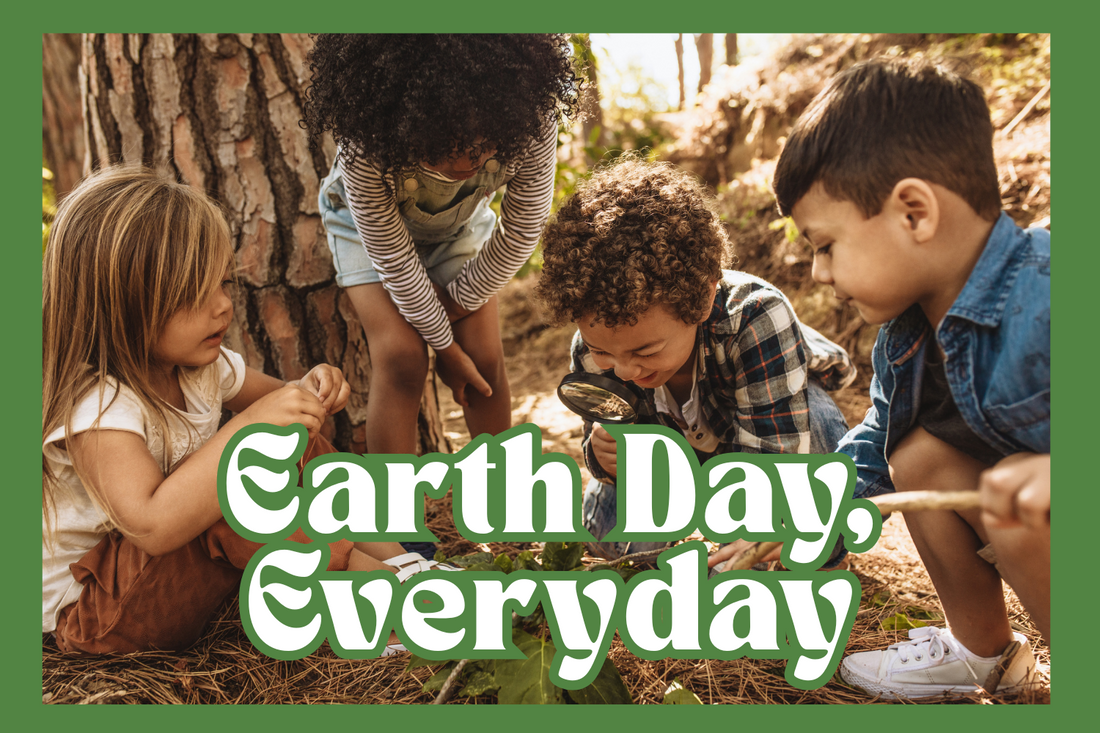
Earth Day, Everyday: Real-Life Eco Habits Kids Will Actually Remember
Forget paper plate crafts. This Earth Day, we’re not just planting seeds in soil—we’re planting habits, memories, and powerful language that sticks.
If you’re raising young children or teaching in early grades, Earth Day shouldn’t be a one-day performance. Let’s make it feel lived-in. Natural. Just like putting on shoes before going outside.
These ideas are more than just “green tips.” They build responsibility, vocabulary, and real connection to the planet. Here are fresh, bilingual-friendly ways to make Earth Day, everyday.
**This post contains affiliate links from Amazon, meaning I earn a small commission if you make a purchase through them, at no extra cost to you.
💡 1. Create a “Power Patrol” Team (Yes, Like a Secret Mission)
Let kids be in charge of turning off lights, unplugging devices, and checking that faucets aren’t dripping. Give them a badge, checklist, or timer—whatever makes it feel official.
Say it together:
- “Turn off the lights” / Apaga la luz
- “Unplug it” / Desenchúfalo
- “Save water” / Ahorra agua
Use these phrases as part of your home or classroom routine—they become part of the child’s natural language and memory.
🚮 2. The Trash Challenge: What Didn’t Need to Be Trash?
Have kids examine (safely) a day’s worth of household or classroom trash. How many things could have been reused? Recycled? Avoided?
Then turn the question around: What could we do differently next time?
Bonus activity:
- Set up a "recycling detective" table where kids sort real-life clean items into trash, recycle, or reuse
Say it together:
- “Put it in the recycling” / Ponlo en el reciclaje
- “Let’s use it again” / Vamos a usarlo otra vez
🌳 3. Start a Family or Class “Earth Jar”
Every time someone does something kind for the planet, add a pebble, leaf, or marble to the jar. When it fills up, celebrate with a nature outing.
Let them see their impact growing.
Ideas to add a pebble:
- Walked instead of driving
- Packed a no-trash lunch
- Used both sides of the paper
- Reused a container or water bottle
Bonus phrase:
- “Take care of our Earth” / Cuidamos la Tierra
🛋️ 4. Repair Instead of Replace (And Let Kids Help)
Got a toy with a ripped arm? A book with a torn page? Involve kids in fixing it instead of tossing it.
Use glue, tape, or thread to give it new life. This teaches sustainability and nurtures problem-solving.
Bilingual prompt:
- “Let’s fix it” / Vamos a arreglarlo
🌾 5. The 3-Object Nature Walk
Instead of grabbing everything, have kids collect just 3 things from nature to bring back: one beautiful, one curious, and one useful.
Use them in a craft, story, or display. This practice builds mindfulness and avoids over-harvesting.
Say it together:
- “What do you see?” / ¿Qué ves?
- “Only take a little” / Solo toma un poco
📖 6. Read Books That Go Beyond Trees & Bears
Look for stories that connect environmental habits with daily life—especially from cultures around the world.
🛒 Consider:
- We Are Water Protectors by Carole Lindstrom We Are Water Protectors
- Thank You, Earth by April Pulley Sayre Thank You, Earth – HarperCollins
- My Friend Earth by Patricia MacLachlan My Friend Earth | Chronicle Books
- Mi papá es un agrícola / My Father, the Farm Worker Mi papá es un agrícola / My Father, the Farm Worker (English and Spani – MiJa Books
🎮 7. Turn It Into a Game
- Who can compost the banana peel first?
- Who remembered their reusable bottle today?
- How many green choices can you find in 10 minutes?
Add movement. Add silliness. The planet will thank you.
Final Note:
Earth Day isn’t an event. It’s a mindset.
The earlier we show kids that their actions matter, the more it becomes second nature. Let the language grow alongside the habits.
Because taking care of the Earth doesn’t start with a poster. It starts with a phrase, a pattern, and a story they remember.
